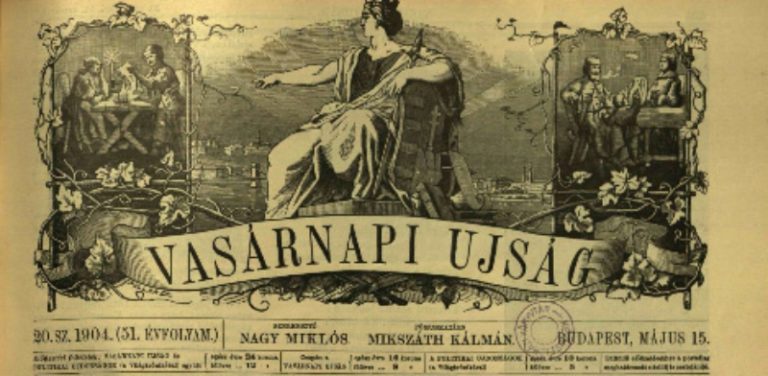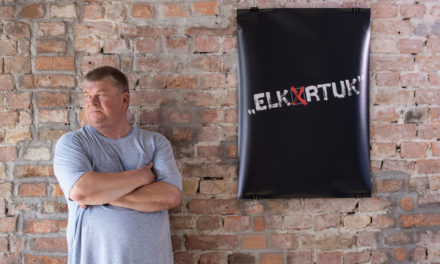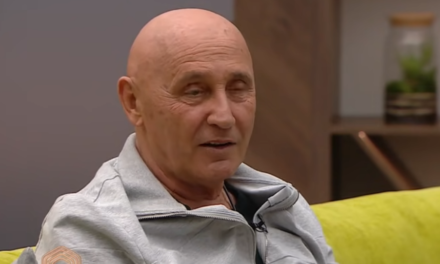In recent times, there has not been a more impressive march and demonstration in Hungary than last Sunday's national libertarian assembly in the capital - begins its report, published on March 11, 1894, Vasárnapi Ujság.
The newspaper reported on the large-scale celebration with a huge influx of people that took place the previous weekend, but in a somewhat shorter coverage, understandably with the passage of time. At the same time, the Pest-Buda Monuments of the XIX. In a book published in 1941 with the title of the 19th century, the author Richárd Radó compiled a collection from the newspapers and publications of the time, with extensive research. In the introduction, the author wrote, among other things:
"At that time, the country had so much value in all areas that we can safely call it the 19th century. century to the heroic age of the nation."
Among the writings in this book, you can find a detailed account of the already mentioned sympathy demonstration with the following title: Excitement due to church political laws. We publish the report with some abbreviation, since the essence of the detailed description of the history of the march is that the part of Sándor Wekerle's ecclesiastical political program to make civil marriage mandatory caused the distaste of many, but the camp of supporters was very large.
"The nationwide libertarian march and meeting held in the capital for the sake of the church policy bill was impressive. Since the coronation of the king, there has not been such a flood of people on the streets of Budapest as on the day of the national assembly. Every county, town and village was represented by a delegation. in support of the government's proposal with the historically significant Rákóczi flag, and the city of Hajduszoboszló with the Bocskay flag The delegates from the city of Fiume brought with them a huge flag in national colors. Budapest's one-hundred-and-twenty-member delegation was led by the Dali-sized, decorated Hungarian deputy mayor Márkus József.
The rural legislative authorities and various bodies and associations gathered in several parts of the capital to join the march from there to the place of the national assembly, to the open space behind the water tower. The meeting places were in Kálvin, Ferenc József and Gizella squares, as well as in the square in front of the Nyugati railway station. The delegations were lined up by two equestrian directors: Baron Elek Nopcsa and Count Béla Zichy, as well as Ferenc Heltai, Róbert Rémi, Rezső Havass, Aurél Münnich and Count Géza Teleki. At the mouth of Andrássy-út, the delegation coming from all directions was waiting on horseback: Gedeon Rohonczy, the chief director of the parade and national assembly, Károly Csáky, Counts Gyula and Imre Károlyi and Gusztáv Tarnóczy. When the delegations were all together, Baron Elek Nopcsa gave the signal to depart with a horn. Chief director Gedeon Rohonczy rode at the head of the procession with Count Gyula and Imre Károlyi and the other equestrian directors. Immediately after them came the university youth with silk national flags. The line of delegations was opened by the Aradians with their band in colorful uniforms. Lajos Kossuth, Wekerle, Csáky and the civil marriage were already discussed at the gathering. The Andrássy-út palaces were decorated with flags, draperies and carpets. He watched the parade from the balcony of the Harkányi Palace in the company of Mihály Munkácsy and his wife, Baron Frigyes Harkányi, Ferenc Beniczky and Baron Béla Lipthay. The VI-VII. On the balcony of the district circle, Mór Jókai was noticed by the audience of the parade and enthusiastically celebrated. Károly Eötvös and Albert Berzeviczy, then state secretary of the Minister of Culture, who were on the balcony of a private palace, received an ovation in front of the Abbazia coffee house. Between the lines of the audience, the huge procession arrived at the meeting place via Stefánia- and Csömöri-út. The grandstands built on the huge square were filled to the point of anxiety by that time....
... It was already evening when the huge crowd began to disperse. After the meeting, a part of the audience went with the university youth to the Kerepesi-úti cemetery, where they laid a wreath on the graves of Deák and Irányi, who were dissidents in politics, but equally professed liberal principles. Independence MP Elek Papp spoke at Deák's mausoleum, and government MP Imre Szivak spoke at Irányi's grave. The impressive course of the assembly decided the fate of the ecclesiastical bill and the position of the Wekerle government was strengthened. "
After the report on the sympathy demonstration, you can also read about the civil marriage debate. It's as if history repeats itself.
"The party fights intensified and the agitation against the proposal was even taken to schools. The news that pamphlets against civil marriage were distributed among the students at Ranolder's institute caused a great stir in the newspapers. Béla Pártos interpellated about this matter at the general assembly of the capital and asked for strict measures so that "the enamel of the youth's mood cannot be poisoned with such forms in the future". Mayor Kammermayer admitted in his answer that the said forms were distributed in the Ranolder institute, but when the headmistress of the institute found out that they were not approved by the church authorities, she prohibited their further distribution. By the way, he will present to the general assembly the transcript of the archbishop, consecrated bishop Nándor Cselka, which he addressed to the district inspector Mihály Bogisich in this matter. The text of the transcript of the archbishop's vicar is this:
"It has come to my attention that in two of the Catholic schools in Budapest, in the last few days, a small printed sheet discussing Catholic and civil marriage has been distributed among the children. I can't help but disapprove of this procedure and I call on your majesty, as a school inspector, to please inform the managements of the respective schools of my disapproval of this, expressing my hope that such a thing will not happen again. Everyone has the right, and even those in charge, have the duty to fight against the proposed laws in a free and fair way, but children are not among those who fight, and schools should not be the battle ground. With the children, the teachers should turn with fervent prayer to the giver of light, may he graciously enlighten the minds of the ecclesiastical and secular legislators so that they pass laws that serve the true benefit of the church and country. That's enough, it's a Catholic procedure and I wish that the leaders of the schools adhere to it". "I think," said the mayor, "the transcript can satisfy all of us."
The general assembly took note of the answer and the matter returned to the agenda.
The watchword of civil marriage reigned throughout the country. Wekerle reached the peak of popularity. In public offices, casinos and shop windows, everywhere. they saw his face. They sang couplets about him in the theaters and Pista Dankó dedicated his composition to him, one of whose very popular stanzas is still remembered by many."
Featured image: huszadikszazad.hu













